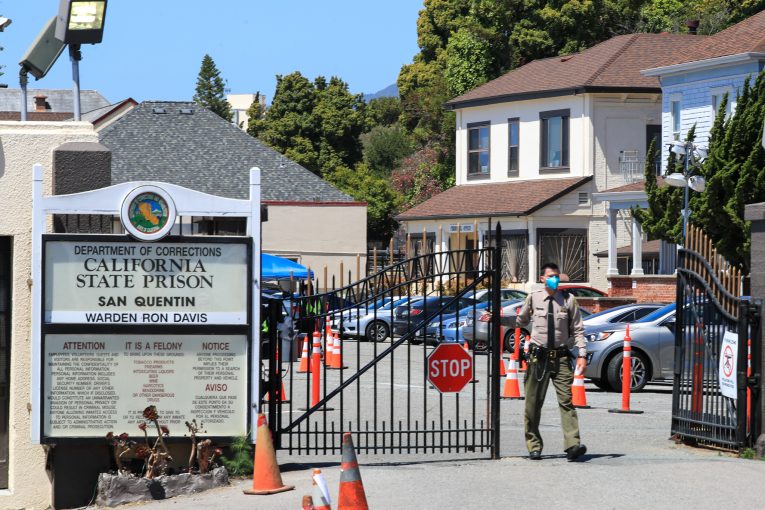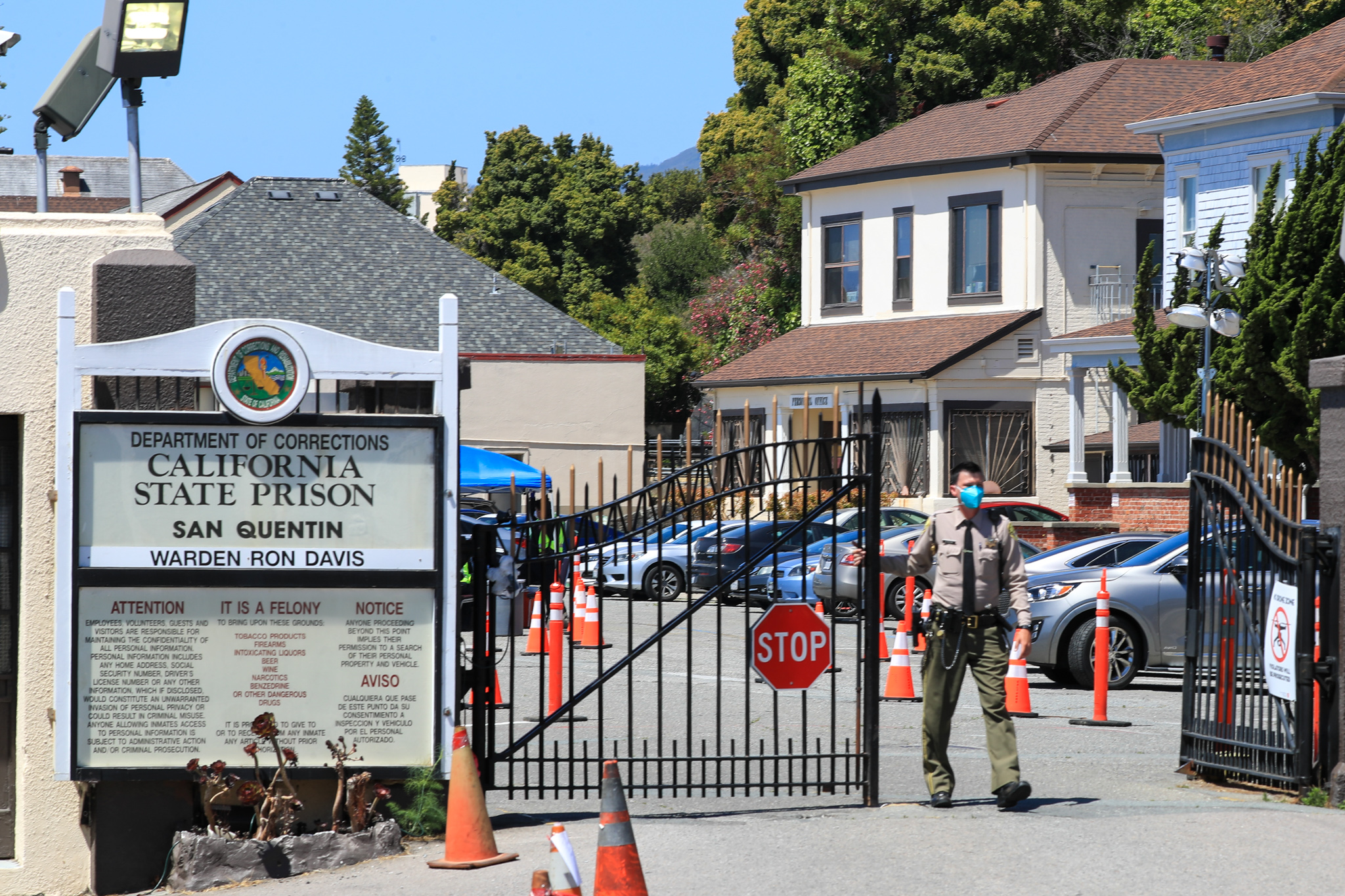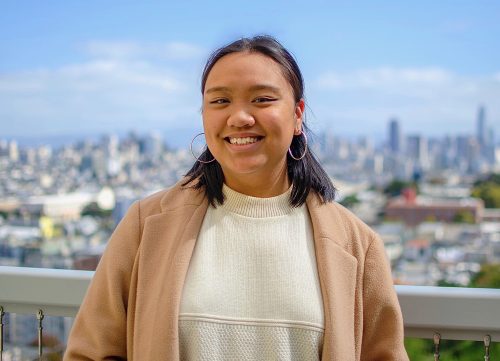
 By Jose Medina and Priana Aquino
By Jose Medina and Priana Aquino
MARIN, CA – In Marin County Superior Court Thursday, in a weeks-long hearing into the deadly COVID-19 outbreak at San Quentin Prison that killed dozens, Judge Geoffrey Howard heard testimony from the chief psychiatrist and a nurse at the prison, and a professor at the USC Department of Medicine, an expert witness on infectious disease prevention.
Dr. Paul Burton is the chief psychiatrist at San Quentin prison—he’s worked there for 12 years, and he told the court about the mental health services provided in the prison.
He revealed that there was an uptick of mental health referrals from incarcerated people one month into the COVID outbreak in the prison. He recalled that at that time San Quentin had a large number of COVID cases, noting that “it was definitely a lot, at least 1,000 (cases) at that point.”
Dr. Burton recalled that “there was an increase in July. We had 412 referrals for reference purposes prior to the pandemic. In December of 2019 we had 391 referrals.” He added that “we did have a spike compared to pre-pandemic levels.” 
In an effort to save face for San Quentin Dr. Burton hastily added “but after July there’s been a decrease of referrals leading up to this day… it’s progressively decreased.”
Indicative of the mental health toll the outbreak took on incarcerated people, Dr. Burton pointed out something intriguing about those who submitted mental health referrals.
“We not only received referrals of people in the mental health program, but what was unique was that we had folks of the general population that were reaching out to mental health,” he said.
During cross-examination, Deputy Public Defender Christine O’Hanlon revisited Dr. Burton’s comments on referrals. She asked him if it is safe to assume that not everyone with mental health symptoms in San Quentin prison would request mental health services due to the stigma that surrounds mental illness.
Dr. Burton answered, “[T]hat is fair, we wish they all would request services but not all do” and added “for certain individuals I think you are right…there are some stigma and concerns about that in reaching out to professional mental health providers.”
When O’Hanlon asked Dr. Burton whether this stigma could prevent incarcerated people from requesting mental health services he answered, “It potentially could depend on the individual, yes,” indicating that the decrease in referrals he mentioned earlier could be much more nuanced than he initially presented.
Further into the cross-examination, O’Hanlon inquired of Dr. Burton on the quality of mental health services that were provided during the pandemic.
When asked about the mental health services provided in San Quentin’s Adjustment Center, a building used for solitary confinement, O’Hanlon questioned the use of the Adjustment Center as a setting for mental health services for isolated individuals, reminding the court that the facility is primarily used for solitary confinement and could make COVID isolated incarcerated people’s mental health worse.
She asked Dr. Burton if the Adjustment Center is designed to be unpleasant for people who have violated the rules of the prison.
Dr. Burton dodged the question and began by saying “that’s a deep philosophical question, you know. I think essentially it is put in place to prevent the recidivism of future types of rule violations. I don’t know if the explicit purpose is to be unpleasant but it does from a custody standpoint and again not from a healthcare perspective.”
After a long-winded response, he emphasized, “I know less about this topic than others,” and finally concluded, “I believe it is a deterrent in regard to rule violations for inmates so in that law enforcement sense it may serve that function.”
It’s important to note that when someone is in solitary confinement they are not allowed to bring their personal property, socialize with others, or participate in any of the programs offered in prison and are locked inside solid door cells.
O’Hanlon provided a line of questioning to Dr. Burton to see if there was a difference between the treatment of people in the Adjustment Center for disciplinary reasons and for those who were in the facility for being on COVID isolation status.
When asked if incarcerated people on COVID isolation status were allowed to bring their belongings to their new cell in the Adjustment Center, Dr. Burton gave an unclear answer.
He stated, “I don’t know for a fact, I believe there was a lot of custody discussion about that and I believe custody did allow them to take some of their belongings, but the specifics of that I’m not completely aware of.”
But before moving on, Dr. Burton said, “I do recall that it was emphasized on multiple occasions that despite the Adjustment Center’s history it was now no longer a lockup unit, that it was a COVID unit for general population inmates and from a custody perspective should be treated as such.”
Further into the cross-examination, O’Hanlon asked Dr. Burton about the quality of mental health services that were provided during the pandemic.
Dr. Burton stated that his staff provided counseling or therapy sessions through cell front check-ins and that these interactions were done either through telehealth or in person at the door of an incarcerated person’s cell.
He also mentioned that “we also had a satellite tele-psychiatry clinic in one of the rooms where inmates can go for a confidential session.”
O’Hanlon asked Dr. Burton, in the event of these cell front therapy sessions taking place in facilities with open front cells, is it “fair to say that prisoners can hear each other from cell to cell so, for instance, a person living in cell 102 can hear what’s going on in cell 103 because of the open setting?”
Dr. Burton admitted that confidentiality would be compromised and said “most definitely, it’s better than nothing but certainly the scope of the conversation is limited, yes.”
He added “I should point out that in the Adjustment Center we also had a room that was designated for confidential encounters either via telehealth or in person. However, if someone was in COVID isolation status we couldn’t always pull them out for that confidential encounter but that was basically the case for all of the housing units”
O’Hanlon noted the Adjustment Center has solid door cells and asked Dr. Burton on the logistics of how a cell font check-ins would work in such a facility. She asked whether his staff members and incarcerated people would communicate through some type of food slot or by yelling through the door.
He answered that “yeah, you can actually hear pretty well and once we got the Wi-Fi connectivity in the Adjustment Center optimized in the Spring of 2020 before the outbreak the quality of the video feed got to the point where encounters could occur again.”
Dr. Burton then noted that this type of interaction did not foster confidentiality when giving mental health care services, noting, “Was it perfect? Was it ideal? No, but given all the various risks and benefits we thought that was the safest way to thread the needle to balance the public health risks with the psychiatric health risks.”
O’Hanlon then asked if the prison provided individuals with the proper equipment to participate in telehealth such as tablets or I Pad’s to make having a confidential conversation with a practitioner possible.
Dr. Burton answered, “No, we discussed that possibility or like a six-foot selfie stick. We were never able to implement that aspect of telehealth.”
He then revealed “typically what would happen is that a nurse tele presenter would hold a laptop and would basically be the interface between the doctor on the screen and the inmate or patient within the housing unit,” indicating that the telehealth service came up short in preserving confidentiality between patient and practitioner.
Dr. Burton noted that “some of our housing units were able to secure some earbuds or earphones so at least what the doctor was saying was going to be confidential” however, “given the solid doors at the Adjustment Center we couldn’t get the cord through the solid door.”
Finally, when Dr. Burton was asked whether the carceral setting from its contained spaces and dense populations would increase the stress and anxiety of incarcerated people, he answered, “I think in any setting the less control you have the more potential stress will develop most definitely, and in prison it would be no different.”
After a recess, the next witness that was brought to the court was Trina Yumang, who is a registered nurse and has worked at San Quentin since 2015.
In 2015, Yumang became the public health nurse for the institution. Her responsibilities included helping to contain communicable diseases and in treating and preventing these diseases.
Yumang was questioned by Attorney Michael Lagrama from the Deputy Attorney General on the nature of COVID prevention and safety in San Quentin throughout the pandemic.
In her testimony, Yumang explained the difference between polymerase chain reaction (PCR) testing and rapid testing. While rapid tests are more commonly used, PCR tests are the “gold standard” in providing accurate results.
However, the results from PCR tests take considerably longer to receive. Compared to rapid testing, which only takes 15 minutes, PCR results usually take 48-72 hours.
San Quentin experienced a five-day delay in PCR test results during the time of the COVID outbreak.
Attorney Nathaniel Brown, who cross-examined Yumang, asked her if this elongated delay in test results could both make it difficult to manage an outbreak and result in another positive testing person exposing others within that time. Yumang answered yes.
Yumang’s testimony also shed light on the quarantine processes that San Quentin had implemented throughout the pandemic.
According to Yumang, isolation for inmates means moving any patient with symptoms or who tested positive in a single cell behind a solid door. Quarantined inmates included those that were exposed to COVID but were asymptomatic. They were also separated from the general population and put in a cell with a solid door.
Both of these terms and corresponding actions were based on guidance from California Correctional Health Care Services (CCHCS) that was first issued around April 1. San Quentin’s isolation units are located in their Adjustment Center, separate from the dorms.
Surveillance testing is another practice in place at San Quentin, which is done to further determine any new cases within the inmate and staff population. Surveillance testing was essentially mass testing done on a weekly basis.
If inmates who were not vaccinated refused to have a test, they were moved to the San Quentin adjustment center to stay in isolation for 14 days.
In response to questions about protocol on inmate transfers, Yumang testified that the CCHCS had guidelines on testing for COVID when moving inmates from place to place.
The COVID testing requirements for transfers before they moved was that they had a negative PCR test 5 days before the transfer. If the test was positive, they would not be cleared to leave.
The prison receiving the transfer can see if the prison has complied with COVID testing, and further, could deny the transfer all together.
Yumang testified that in the last three months, San Quentin has received transfers who complied with the necessary positive tests.
The second witness presented to the court Thursday afternoon was Dr. Jeffrey Klausner. He is a Professor at the USC Department of Medicine, and a member of the Center of Disease Control (CDC).
Dr. Klausner has spent the last 15 months using his prior research on infectious disease prevention to aid in COVID research.
His testimony was largely used as an expert opinion on the COVID regulations that were implemented in San Quentin.
Most of the questions he was asked by Attorney Lagrama were clarifying the definitions of terms such as isolation and quarantine, and discussing the origins of COVID and the variants that make it so deadly.
According to Dr. Klausner, close contact that results in an infection “means being within six feet for more than 15 minutes within a 24 hour period.” Based on prior testimony by San Quentin inmates, “we know some of them were exposed for longer than 15 minutes in a 24-hour period to inmates testing positive.”
Lagrama gave Klausner a hypothetical situation: “On or around May 30, inmates would be transferred to San Quentin from a state prison. These 120 inmates would be quarantined from native inmates for 14 days. To do this, they cleared out one tier of a five tier dorm with open air doors for them to stay in.”
“The incoming inmates would be housed in the same dorms as the native dorms. However, the 120 inmates would go into the yard only with other transferring inmates…assume any inmates from CIM would have to wear masks and use social distancing guidelines.”
Lagrama then asked, “Was this plan by prison officials…an unsafe decision to stop the spread of COVID among individuals?
Dr. Klausner responded by saying, “Based off of what was known at the time, it was seemingly the best that they could do under the circumstances.”
The hearing will continue at 9 a.m. on Friday morning.
Jose graduated from UC Davis with a BA in Political Science and has interned for the California State Legislature. He is from Rocklin, CA.
 Priana Aquino is an incoming 4th year at the University of San Francisco, majoring in Business and minoring in Legal Studies. Upon graduation, she hopes to attend law school and continue her work in uplifting and advocating for communites of color.
Priana Aquino is an incoming 4th year at the University of San Francisco, majoring in Business and minoring in Legal Studies. Upon graduation, she hopes to attend law school and continue her work in uplifting and advocating for communites of color.
To sign up for our new newsletter – Everyday Injustice – https://tinyurl.com/yyultcf9
Support our work – to become a sustaining at $5 – $10- $25 per month hit the link: